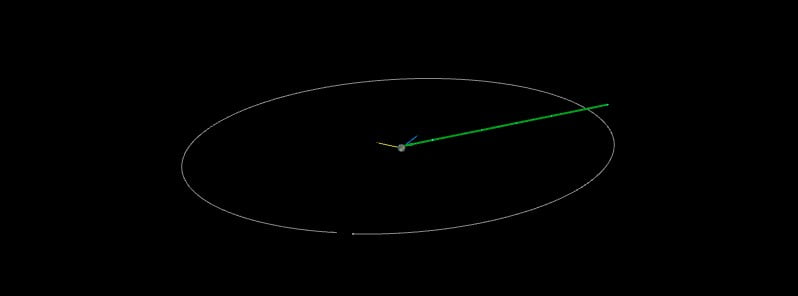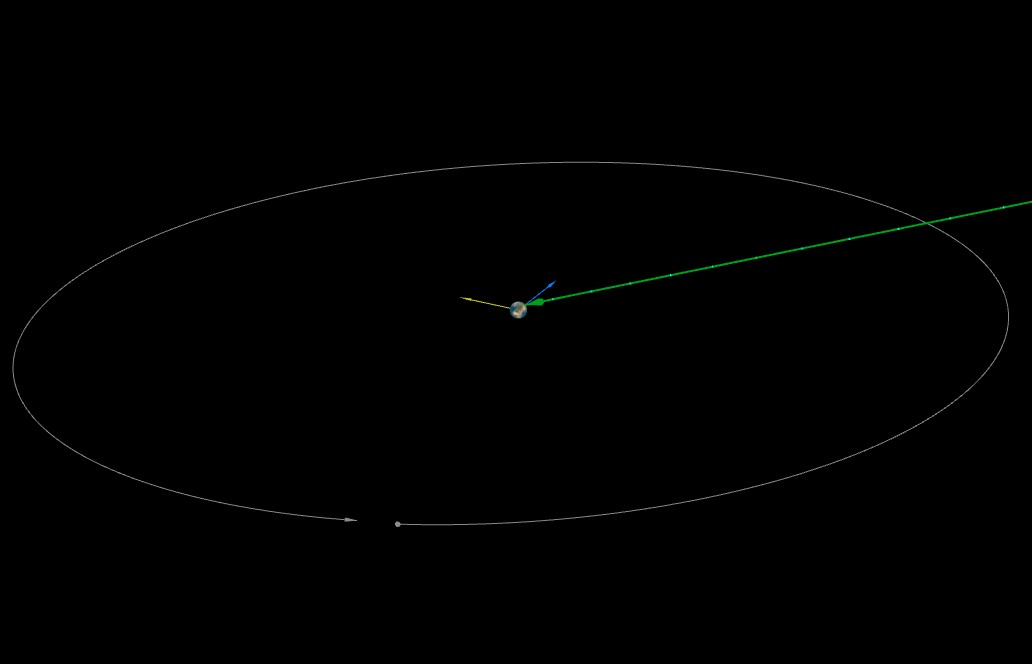Asteroid 2022 EB5 impacts Earth – the 5th predicted Earth impact on record

A small Apollo-class asteroid designated 2022 EB5 impacted Earth’s atmosphere and disintegrated southwest of Jan Mayen island in the Arctic Ocean at around 21:22 UTC on March 11, 2022.
The object was discovered at GINOP-KHK observatory by Hungarian astronomer Krisztián Sárneczky at 19:24 UTC, roughly two hours before it impacted Earth.1 This made it only the 5th time an asteroid was discovered before it hit Earth.
Italian astronomer Enrico Pettarin photographed the asteroid at 20:28 UTC.
“This is the second time I’ve seen an asteroid before it hits Earth – so surveillance works,” Pettarin said.
“In the animation, the asteroid is trailed to emphasize its movement (5s exposure, 0.61-m f/4.5 reflector), from 20:40:28 UTC to 20:42:50 UTC, 38 000 km [23 600 miles] from the Earth’s center.”
“An alert was sent to observers roughly one hour after the discovery, encouraging European observers to monitor the small object before it would enter our planet’s atmosphere,” Karl Antier of the International Meteor Organization (IMO) said.2
“Additional data allowed a more accurate impact position south of Jan Mayen island and time predictions around 21:23 UTC.”
Near the predicted impact time, some observers from Northern Iceland, close to Akureyri, reported having observed a bright flash above the horizon, Antier said.

Asteroid 2022 EB5 impact trajectory – March 11, 2022. Credit: Minor Planet Center
The explosion was detected by Comprehensive Nuclear Test Ban Treaty Organization infrasound stations in Greenland and Norway. Combining data from the two locations, University of Western Ontario astronomer Peter Brown estimated that the asteroid exploded with an energy close to 2 kilotons of TNT.
“Assuming a speed of 15 km/s, it must have been about 3 m (9.8 feet) in diameter,” Brown said.3
The other 4 asteroids detected before impacting Earth are:
- 2008 TC3 – impacted over Nubian desert, Sudan on October 7, 2008. Discovered on October 6, 2008. Dimensions: approximately 4 m (13 feet); Mass approximately 80 tons.
- 2014 AA – impacted over the Atlantic Ocean, 3 000 km (1 864 miles) from Caracas, Venezuela on January 2, 2014. Discovered on January 1, 2014. Dimensions: approximately 3 m (9.8 feet); Mass approximately 40 tons.
- 2018 LA – impacted over the Botswana-South Africa border on June 2, 2018.4 Discovered on June 2, 2018. Dimensions: approximately 3 m (9.8 feet); Mass approximately 40 tons.
- 2019 MO – impacted off the south coast of Puerto Rico, the Caribbean Sea on June 22, 2019.5 Discovered on June 22, 2019. Dimensions: approximately 5 m (9.8 feet); Mass approximately 200 tons.
All were small space rocks that did no damage when they broke up in our planet’s atmosphere.
“2022 EB5 appears to be the smallest yet, and demonstrates that humans are getting better at finding potentially dangerous asteroids before they strike,” said Dr. Tony Phillips of SpaceWeather.com.
Impact! When 2022 EB5 struck the Earth north of Iceland this morning, it became the 5th asteroid to be discovered prior to impacting Earth. pic.twitter.com/kYsQ40uuFq
— Tony Dunn (@tony873004) March 12, 2022
Infrasound detection from 2022 EB5 impact off the coast of Iceland at I37NO between 2223-2227 UTC. Below is I18DK infrasound data in Greenland. Arrival near 2340 UTC. From this data yield is approximately 2-3 kT TNT. At 15 km/s, this is roughly 3-4 m diameter. @WesternU #2002EB5 pic.twitter.com/FYI9jn7zCb
— Peter Brown (@pgbrown) March 12, 2022
1 Asteroid 2022 EB5 at Minor Planet Center – MPC
2 2022 EB5: 5th predicted Earth impact! – IMO
3 An Asteroid Just Hit Earth – SpaceWeather
4 Asteroid 2018 LA – The Watchers
5 Asteroid 2019 MO detected 12 hours before exploding over the Caribbean Sea – The Watchers
Featured image credit: Minor Planet Center

If the space bolide explodes in the atmosphere, is it still considered an impacter?
Yes